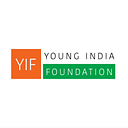Analyzing The Haryana Assembly Elections
A Think Article by Silvester Kennedy
The assembly election in Haryana witnessed a contest between the Indian National Congress (INC), the Bharatiya Janata Party (BJP), the Indian National Lok Dal (INLD) and the Jannayak Janata Party (JJP) among others for 90 seats. The state has a 30 percent Dalit population and 17 reserved seats. In the previous elections, the BJP had won 9 out of 17 reserved seats but this time around the count has decreased to 5. Experts have credited this to the recent unemployment and agriculture distress experienced by the oppressed in the state. Interestingly, BJP’s post-poll alliance with Jannayak Janata Party (JJP) adds 3 more seats to alliance increasing the tally to 8. It is important to emphasize the popularity gained by the regional party which was started just 10 months ago in December 2018. JJP was started by Dushyant Chautala with the ideology of Choudhary Devi Lal who served as Deputy Prime Minister of India in V.P Singh’s cabinet.
The Haryana Legislative Assembly was founded in 1966 when the state was created from part of the state of Punjab (Punjab Reorganisation Act, 1966). It initially had only 54 seats (10 reserved and 44 general), and this was increased to 81 seats in March 1967. It was then increased to 90 in 1977.
Since day one, the states’ political affairs have been dramatic, starting with the five ruling families of Haryana to ‘Aaya Ram Gaya Ram’. In an infamous article by Deeksha Baradwaj for The Print she wrote “How 5 families over 3 generations have controlled Haryana’s politics from day one. Hoodas, Chautalas, Bansi Lal, Bhajan Lal & Birender Singh have ruled Haryana since 1966. The fight continues as Gen Now join the poll battle — some for control, some for survival.” ‘Aaya Ram Gaya Ram’ a phrase which originated in 1967 because of the excessive political horse-trading, counter horse-trading, and counter-counter horse-trading. This trading triggered multiple and serial political defections within a few weeks, which resulted in the dissolution of the Haryana Legislative Assembly in 1968. To end this trend, the anti-defection law was made in 1985.
The Indian National Lok Dal (INDL) was started in the year 1998. The party joined hands with the Bharatiya Janata Party-led UPA government from 1998 to 2004 at the union level. Shortly after, INLD had performed very poorly in their state elections and consequently lost in 2005, 2009 and 2013 assembly elections. It also failed to win a single seat in both 2004 and 2009 general elections, despite being in alliance with Bharatiya Janata Party in 2009. On 16 January 2013, Om Prakash Chautala and his son Ajay Chautala were sent to jail after a New Delhi court sentenced them to ten years imprisonment with corruption charges. In the 2014 Legislative Assembly election, the INLD won 19 seats and was the chief opposition party in the state but in 2019 assembly elections the party managed to win only a single seat. The Jannayak Janta Party (JJP) emerged from a split in the Indian National Lok Dal (INLD) was started by Om Prakash Chautala’s grandson Dushyant Chautala, who is now allied with the BJP. After the post-poll alliance with BJP, Dushyant Chautala was sworn in as the new deputy chief minister of Haryana.
Even after years of political drama in the state, Indian National Congress has had a clear presence in the state until 1998. Bharatiya Janata Party allied Indian National Lok Dal (INDL) then ruled the state between 1998 and 2004. Bhupinder Singh Hooda of Congress served as the Chief Minister of Haryana from 2005 to 2014. In the 2014 election, BJP won with a single majority and Manohar Lal Khattar formed the government. Manohar Lal Khattar is now continuing his second term as the Chief Minister of Haryana with the help of the Jannayak Janata Party (JJP) and 7 independent MLAs.
Adding to the recent election results, let’s take a look at some primary data Out of 1167 contested from Haryana:
- 707 contestants were independent candidates.
- 155 contestants were below the age of 35, which is around 21% of all contestants.
- The average age of contestants from BJP, INC, JJP, and INDL is 51.32, simultaneously, the average age of independent candidates was at 44.25
Party-wise contestants under the age group of 35
Data support the hypothesis that the newly emerging parties have given tickets to more young candidates than the established ones, probably because they are not in the pressure to win the election using certain vote bank. Among the seat winning parties in Haryana this term- Bharatiya Janata Party, Indian National Congress, Jannayak Janata Party, and Indian National Lok Dal had given tickets to 8, 2, 10 and 12 young candidates respectively, which is only adding up to 32 contestants out of 360.
If we are looking at participation and inclusivity in the assembly elections of Haryana, I believe the definition of youth participation goes beyond just the age: People might want to think beyond the 5 ruling families of Haryana and while out of 155 young candidates contested for the elections only 15 were women, we need to push for women’s participation in politics as well. Considering the age of Haryana’s politics, it is one of the few states where independent candidates win elections, the people of Haryana also seem to keep regional parties alive and active. In my eyes, even though there is a long way ahead, the future of Haryana looks very bright.
This piece is part of the larger research and initiative conducted by the think-tank of the Young India Foundation.
The objective of a ‘Think Article’ is to bring knowledge about policies in the sphere, in context to the youth of India and, if possible, influencing the policy process. The article has no motivation to pass any political judgments.
